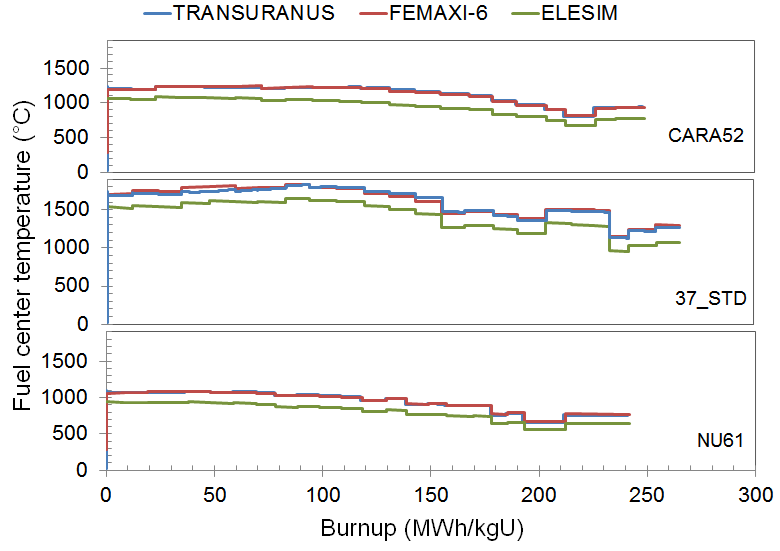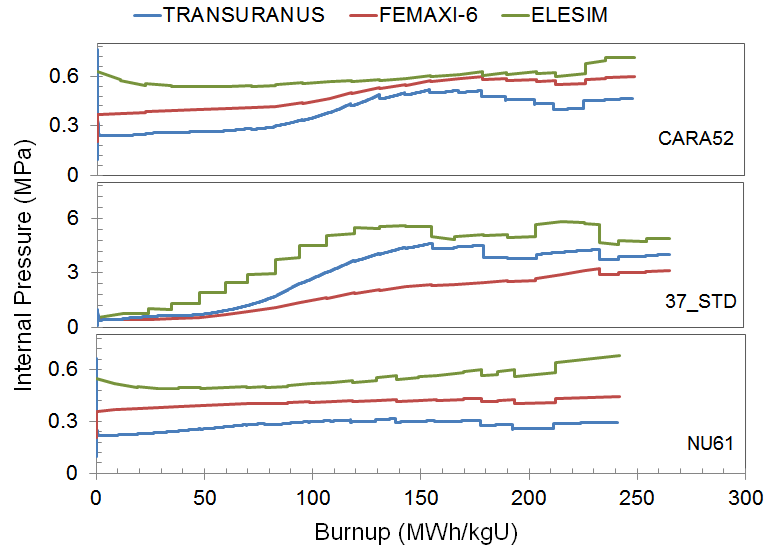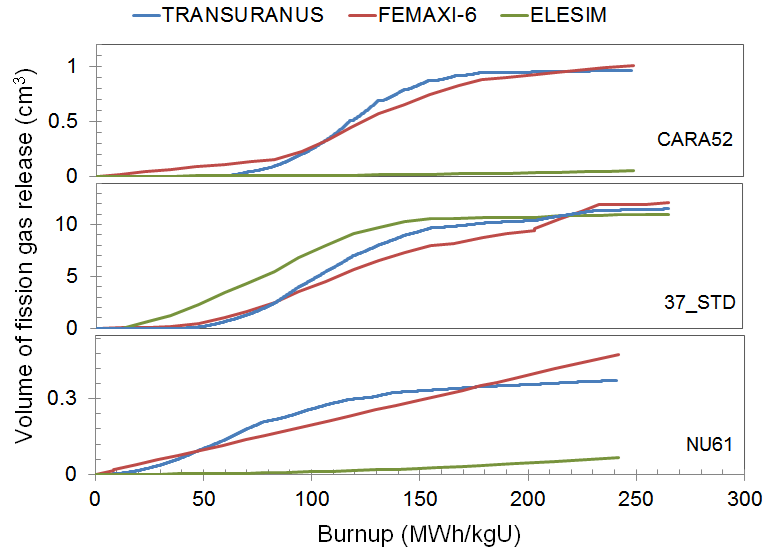Evaluation of Advanced Nuclear Fuel Elements Behaviour Proposed for Use in CANDU Nuclear Reactor
CANDU fuel bundle design has evolved from Nuclear Power Demonstration fuel bundle (19 elements), to Pickering fuel bundle (28 elements), Bruce fuel bundle (37 elements) and CANFLEX fuel bundle (43 elements), respectively.
Atomic Energy Commission of Argentina (CNEA) recently developed a new concept for heavy water reactors fuel bundles, named CARA (Combustible Avanzado para Reactores Argentinos), composed by 52 fuel elements, all characterized by the same fuel element diameter. The target of this new concept was to obtain a substantially improvement in fuel burn-up and security margins at reasonable costs, not higher than those for CANDU fuel bundle fabrication costs.
Based on this concept, Nuclear Fuel Performances Group from RATEN ICN Pitesti developed a new type of fuel bundle, composed by 61 identical fuel elements, and named NU61 (Natural Uranium). The new fuel bundle was designed using the INVENTOR-3D mechanical design, documentation and simulation tool. A higher number of fuel elements with smaller diameter comparatively with the CANDU standard fuel element diameter, enable to reach higher burn-up and lower fuel central temperature. The natural uranium is considered to be the fuel material inserted in a Zy-4 clad. Geometrical data of NU61 were established in order to ensure the compatibility with CANDU systems.
The fuel and cladding performance analyses were carried out in order to establish the irradiation performances of the two advanced concepts, CARA52 and NU61, using different computer codes.
Irradiation histories were obtained from the DIREN code calculations and the power peaking factors (PPF) resulted from the WIMS code simulations, previously performed. Further on, the irradiation histories were used as input in TRANSURANUS, ELESIM and FEMAXI-6 codes along with geometrical data and a proper selection of the model options.
These fuel performance codes treat a single fuel element and the surrounding structure. In general, input files contain information about fuel element geometrical data, power histories and different models used to evaluate specific quantities, such as: thermal conductivity, fuel swelling, fission gas release, gap conductance, heat transfer coefficient between clad and coolant, etc.
The power histories for NU61 and CARA52 fuel bundles are similar; the maximum values obtained were 32.8 kW/m and 38.2 kW/m, respectively. The lowest linear power levels were obtained for NU61 fuel element. The maximum linear power on an outer element for CANDU37 fuel bundle was 54 kW/m. Therefore, the utilisation of these new bundle concepts offers the possibility for the nuclear reactor to operate at slightly higher powers compared with CANDU standard fuel bundle.
The evaluation of the new concepts of fuel bundle was compared with the CANDU standard fuel element behaviour, used as reference in our study.
- In the case of CARA52 and NU61 fuel bundles, the temperature reaches a maximum value of 1240 °C and 1080 °C, respectively, which are well below the values obtained for CANDU37 (~ 1800 °C). Therefore, the advance fuel elements behaviour under normal operating conditions allows a temperature decrease of ~500 °C for CARA52 and ~700 °C for NU61, respectively, compared with CANDU37. These maximum values were obtained with FEMAXI-6 code. TRANSURANUS code predictions are very similar with those provided by FEMAXI-6 code (only small differences can be observed), while ELESIM code under predicted both codes results with differences in the range of 150 °C – 180 °C. A group of researchers from CNEA Argentina performed similar calculations with BACO code for CARA52 fuel element, using a power history with a maximum level of 40 kW/m. BACO calculations show a maximum value of 1340 °C for fuel center temperature (using its associated power history).

Fuel center temperature evolution for CARA52, NU61 and CANDU37 fuel bundles © RATEN ICN - All codes results show lower values for CARA52 and NU61 internal pressures compared with the CANDU37 ones. In both cases, the maximum values does not exceed 1 MPa, while for CANDU37 a maximum value of 6 MPa can be observed (maximum value resulted from ELESIM predictions).

"Internal pressure evolution for CARA52, NU61 and CANDU37 fuel bundles" © RATEN ICN - As it was expected, the lower linear power induces smallest fuel temperature and, consequently, lowers FGR.
As the main results of the analyses performed, the advantages of the CARA52 and NU61 fuel elements in normal operating conditions were shown by the significant benefit in terms of fuel temperature reduction, smaller fission gas release and internal pressure.
Fission gas release evolution for CARA52, NU61 and CANDU37 fuel bundles © RATEN ICN
Given these satisfactory results, one can conclude that both advanced fuel bundle concepts can be safely used in CANDU nuclear reactor.
CARA52 design already attracted the interest of the nuclear power utility in Argentina (NASA) and the fuel manufacturing company (CONUAR). In Romania, NU61 design is one of the best options to move ahead from the actual natural uranium CANDU fuel behavior to a next stage with a lot of benefits.
Dragos Victor IONESCU
RATEN ICN
dragos.ionescu@nuclear.ro